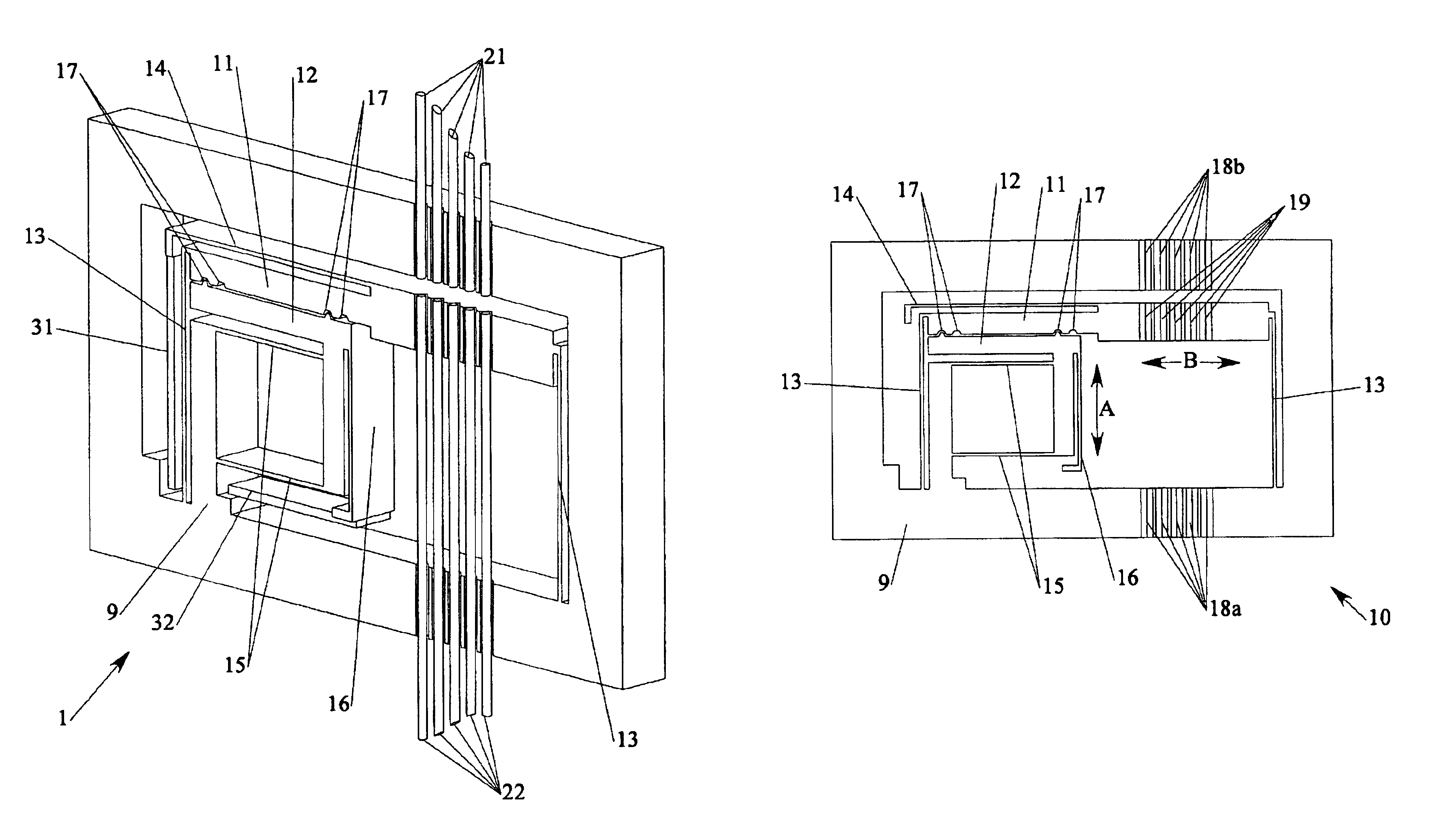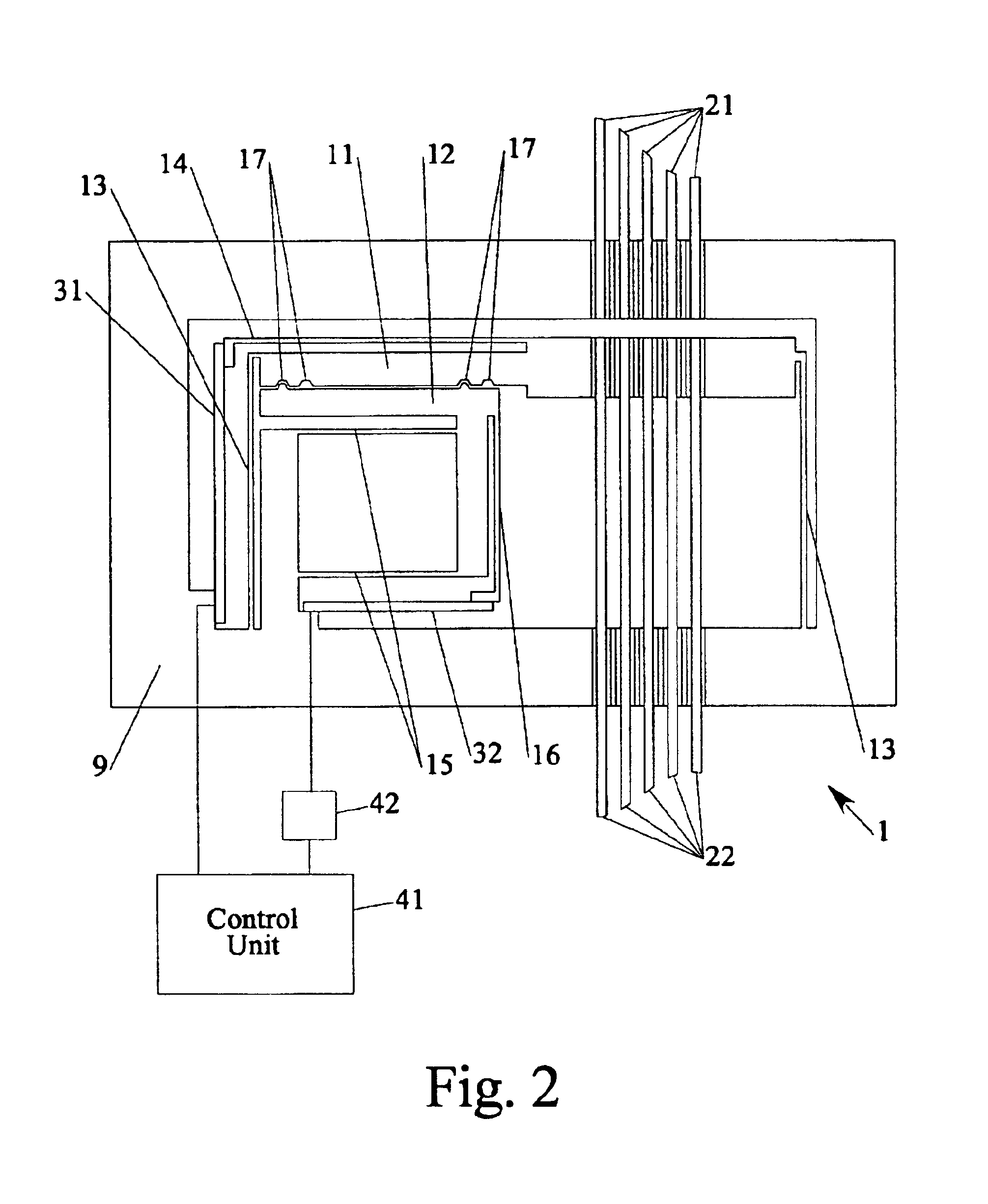Fiber-aligning optical switch
a fiber-aligning, optical switch technology, applied in the field of optical switches, can solve the problems of low efficiency, low reliability, high cost, etc., and achieve the effect of sufficient robustness
- Summary
- Abstract
- Description
- Claims
- Application Information
AI Technical Summary
Benefits of technology
Problems solved by technology
Method used
Image
Examples
Embodiment Construction
[0028]FIGS. 1 and 2 illustrate a preferred embodiment of an optical switch 1 in accordance with the invention. A primary frame 9 includes a switching frame 11 and a latching frame 12, which are flexibly connected to a body 10 via first and second legs 13, 15 (see also FIG. 3). The primary frame 9 surrounds the assembly and provides for stiffness and for attachment of a housing (not shown).
[0029]The optical switch 1 features two piezoelectric elements 31, 32. The first piezoelectric element 31 is part of a switching mechanism that performs the mechanical switching. The switching frame 11 is also part of the switching mechanism. A latching mechanism includes a second piezoelectric element 32 and the latching frame 12, which is actuated by the second piezoelectric element 32. Both piezoelectric elements 31, 32 are well-known bending elements that bend in response to a voltage applied by a control unit 41.
[0030]The piezoelectric elements 31, 32 are bonded with one end on the primary fra...
PUM
 Login to View More
Login to View More Abstract
Description
Claims
Application Information
 Login to View More
Login to View More - R&D
- Intellectual Property
- Life Sciences
- Materials
- Tech Scout
- Unparalleled Data Quality
- Higher Quality Content
- 60% Fewer Hallucinations
Browse by: Latest US Patents, China's latest patents, Technical Efficacy Thesaurus, Application Domain, Technology Topic, Popular Technical Reports.
© 2025 PatSnap. All rights reserved.Legal|Privacy policy|Modern Slavery Act Transparency Statement|Sitemap|About US| Contact US: help@patsnap.com



